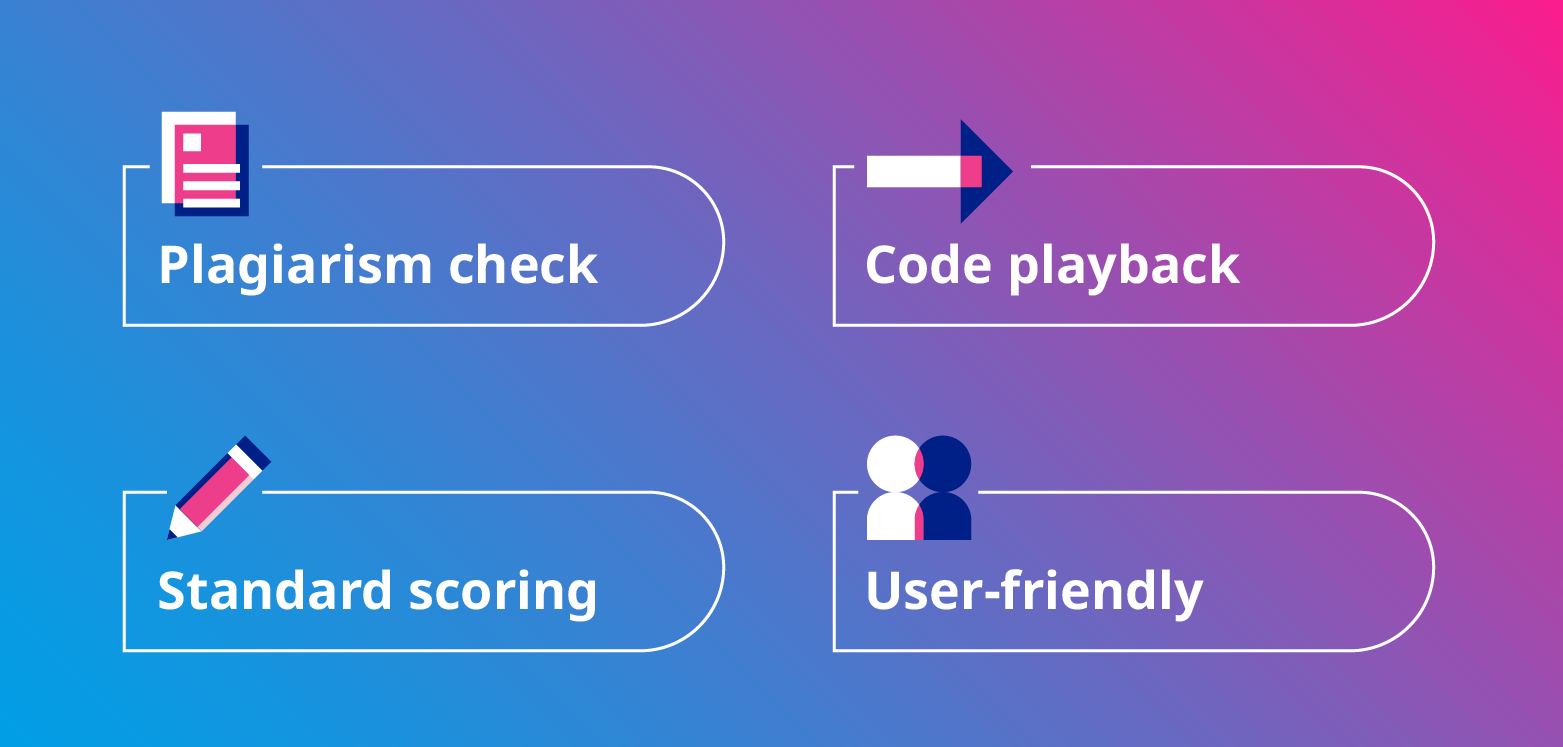It is challenging to find quality tech talent in an exhaustive hiring market. For one job application, thousands of candidates apply, many with relevant job skills. Using the right recruitment tools at this stage helps shortlist top talent for future hiring stages.
Therefore, job skills assessment helps gauge candidates’ comprehensive job fitment. These assessments may not reveal in-depth knowledge of core skills. However, they help evaluate collaboration skills, problem-solving, strategic and critical thinking, and leadership qualities. It helps approach candidates based on their soft skills and technical knowledge.
Key factors that a skills assessment cover
Skills assessment covers many job-related tests, such as domain knowledge and pre-employment assessments. All these integrate to evaluate candidates’ core competencies, leadership, teamwork, and job fitment.
Key factors that make skills assessment valuable for companies:
- High-quality questions: Skills assessment should contain high-quality questions in multiple formats, such as caselets, situational questions, coding questions, etc. A blend of different question types evaluates candidates’ performance on the job.
- Question relevancy: Any employee on the same job profile should be able to answer these questions without challenges. Therefore, questions should help recruiters measure candidates’ key competencies and performance metrics.
- Customized for job skills: Questions in a skills assessment should be tailored to job responsibilities, keeping applicants’ backgrounds and experiences in mind. A candidate with one year of experience may not have similar cognitive and behavioral intelligence as a candidate with ten years of experience.









 Behavioral Competencies
Behavioral Competencies Cognitive Competencies
Cognitive Competencies Coding Competencies
Coding Competencies Domain Competencies
Domain Competencies



























Would you like to comment?